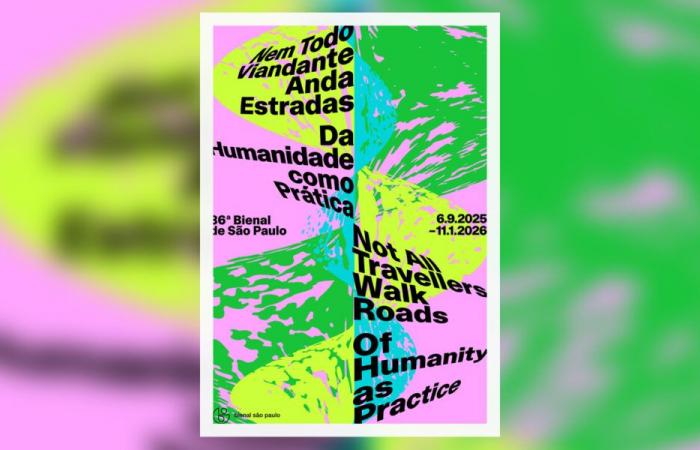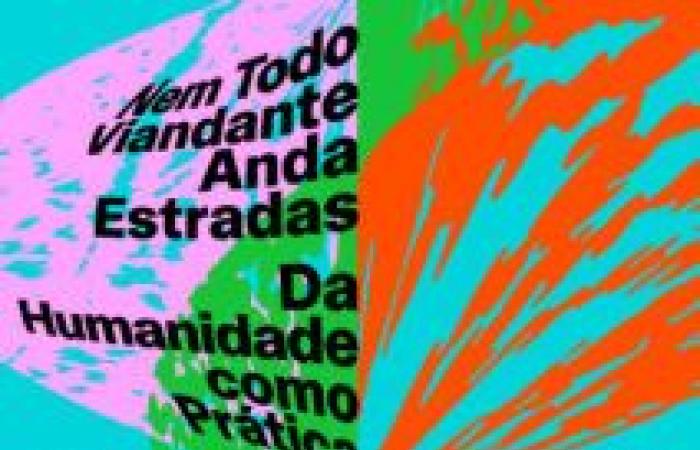The city of Marrakech will host the very first Invocation titled “Breaths: on deep listening and active reception», November 14 and 15, 2024, under the direction of Laila Hida and Maha El Madi. This meeting, which will be held at LE18 and at the Dar Bellarj Foundation, will focus on the precariousness of breathing, particularly among the Gnaoua and Sufis, by approaching listening as an essential practice of coexistence. Through conferences, workshops and performances, we will discover listening as a means of cultivating empathy by exploring new perspectives of sharing and cultural coexistence.
«By organizing these “Invocations”, we wish to bring the curatorial concepts of the Biennale closer to audiences around the world, by inviting everyone to reflect on the values of listening and encounter as the foundations of coexistence. Marrakech, a city rich in traditions and cultural confluences, perfectly embodies this spirit of openness», souligne the president of the Fundação Bienal de São Paulo, Andrea Pinheiro.
For Commissioner General Bonaventure Soh Bejeng Ndikung, this first Invocation in Marrakech reflects the Biennale’s desire to rethink humanity as an active and shared practice. “We live in a time when the bonds between human beings are weakening. Through these “Invocations”, we invite artists, intellectuals and the public to question forms of coexistence through listening and practicing humanity as a living word.“, he says.
In continuity with Invocations in Marrakech, other meetings will take place in 2024 and 2025 in Abymes in Guadeloupe, in Zanzibar in Tanzania and in Japan.
Time, mirror and space
The 36th Biennale, which will be held from September 6 to January 11, 2026 at the Ciccillo Matarazzo Pavilion, is based on a curatorial concept deeply rooted in the poem of the Afro-Brazilian poet Conceição Evaristo, Of calm and silence. This edition is an invitation to redefine humanity as a verb, a practice embodied in conscious actions and interactions.
The Commissioner General, Ndikung, and his team of co-curators (Alya Sebti, Anna Roberta Goetz, Thiago de Paula Souza, Keyna Eleison and Henriette Gallus) will orchestrate this event which reflects a renewed and inclusive vision of humanity.
Team for the 36th São Paulo Biennale (from left to right): Keyna Eleison, Alya Sebti, Bonaventure Soh Bejeng Ndikung, Henriette Gallus, Anna Roberta Goetz and Thiago de Paula Souza.
The São Paulo Biennale structures its journey around three distinct curatorial axes: time, reflection and meeting space, each offering a perspective to enrich visitors’ reflection.
The first axis, “Claiming space and time”, proposes a call to slow down to better understand our environment. It encourages openness to differences and reconnection with nature, reminding us of the importance of contemplation and patience in an ever-accelerating world.
The second axis, “The mirror of the other”, invites collective introspection, exploring the borders that separate individuals and societies. Based on the idea of human interconnection, this axis pushes everyone to see their own humanity in that of the other, through a gaze that transcends differences to establish deeper and more authentic connections.
Finally, the third axis, “Meeting spaces”, takes the estuary as a model, this place of convergence between waters of varied origins. This concept explores cross-influences, particularly those from the manifesto Crabs with brains of the manguebit movement, which evoke a coexistence rooted in diversity. This axis invites us to rethink power asymmetries and to consider forms of coexistence nourished by multiplicity, where each culture and each history finds its place in a continuous dialogue.
Humanity under construction
«At a time when humanity once again seems lost, where the deep meaning of being human seems to waver, and in a context marked by constantly expanding socio-political, economic and environmental crises, it becomes imperative to call for collective reflection on the meaning of humanity. By inviting artists, academics, activists and other cultural professionals from multiple disciplines, we wish to reimagine and combine what humanity could mean today (…) Faced with these present, past and future emergencies, we must grant ourselves the privilege of imagining another world, based on a renewed conception and a living practice of humanity. Thus, the project “Nem todo viandante anda estradas – Da humanidade como prática” is an invitation to consider humanity not only as an idea, but as a verb, an encounter and negotiation between diverse worlds. It is also an invitation to deconstruct asymmetries as a precondition for humanity to assert itself as a practice. This Biennale encourages us to place joy, beauty and their poetics at the center of the forces that keep our worlds in balance…, because joy and beauty are also political forces (…). More than ever, we are invited to envisage a world where humanity rediscovers itself and rises, at a time when humanity seems to us to be lacking.», writes the general curator of this biennial, Bonaventure Soh Bejeng Ndikung.
The Biennale aims to reconsider humanity as a verb, a living practice, essential in a world where rethinking relationships, asymmetries and listening becomes a necessity for coexistence. The central concept, inspired by the metaphor of the estuary – this space of convergence between different waters – guides the curatorial reflection, nourished by Brazilian philosophies, landscapes and mythologies. This framework symbolizes the richness of the encounters that have shaped the history of Brazil and invites a humanity constructed and transformed by listening and negotiation between varied beings and worlds.
Andrea Pinheiro, president of the Fundação Bienal de São Paulo, affirms that this 36th edition of the Biennale, a true artistic heritage of Brazil, is the fruit of a collective process led by the Advisory Council, whose mission is to choose the curatorial project most in tune with contemporary issues. “Although the Biennale aims to be a space for reflection and dialogue on the crucial issues of our time, it also demonstrates the Fundação’s commitment to making art accessible and relevant for a wide audience.“, she said.
Waves of humanity
The visual identity of the Biennale, created by Berlin-based studio Yukiko, represents the idea of polyphony and dynamic coexistence through sound waves symbolizing the frequencies of human experiences. This visual choice reflects humanity as a fluid space, in constant transformation through encounters and interactions, like an estuary where different realities blend together in harmony.
The visual identity of the Biennale, created by the Berlin studio Yukiko.
«Drawing on the curatorial axis of sound and the manguebit movement, the visual identity is based on polyphonic sound waves and the harmonic series, symbolizing the superimposed frequencies of human experiences. These sound waves represent the idea that humanity is constantly evolving and transforming through encounters, much like the estuary, where several worlds meet and mingle. This visual manifestation reinforces the central message of the Biennale: that through intentional listening and deep reflection, we can reimagine humanity as a living and dynamic practice», Explain the designers.
«We hope that this Biennale will not only be a space for dialogue, but also a true celebration of humanity in all its forms», concludes Andrea Pinheiro, president of the Bienal Foundation.







